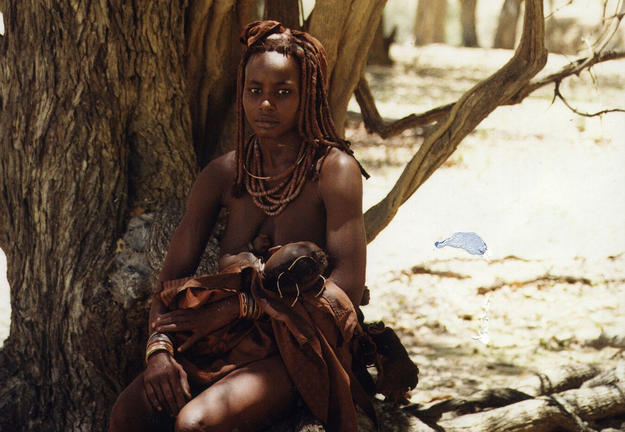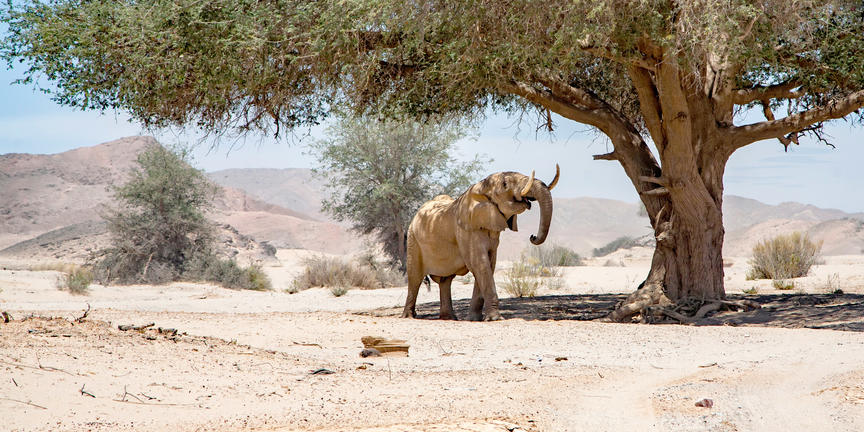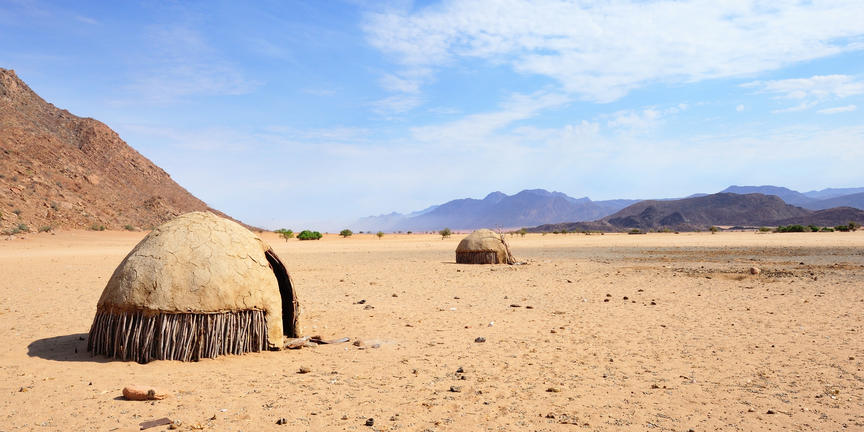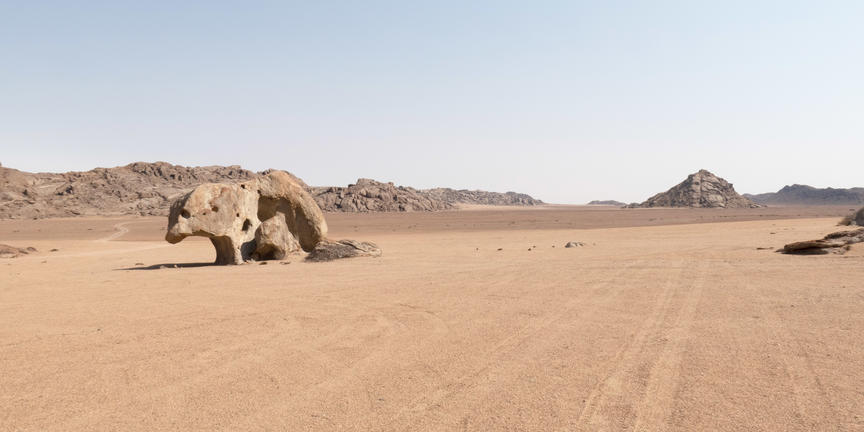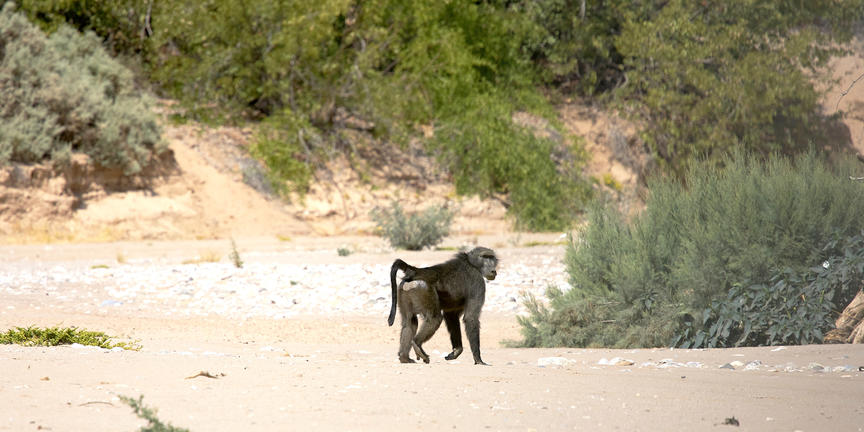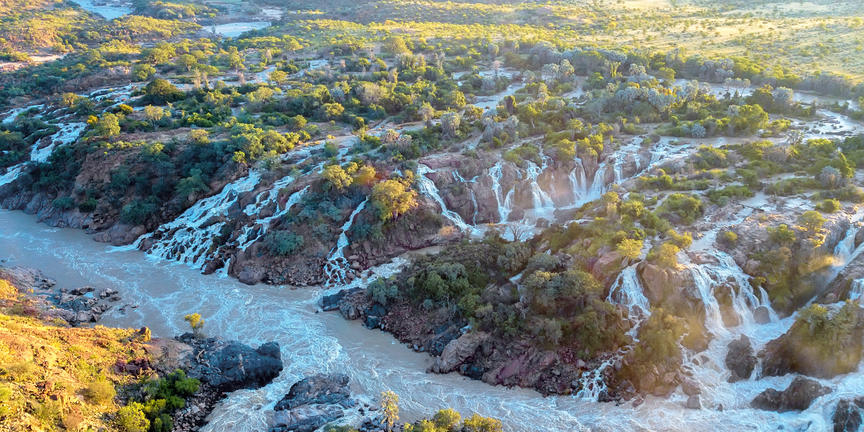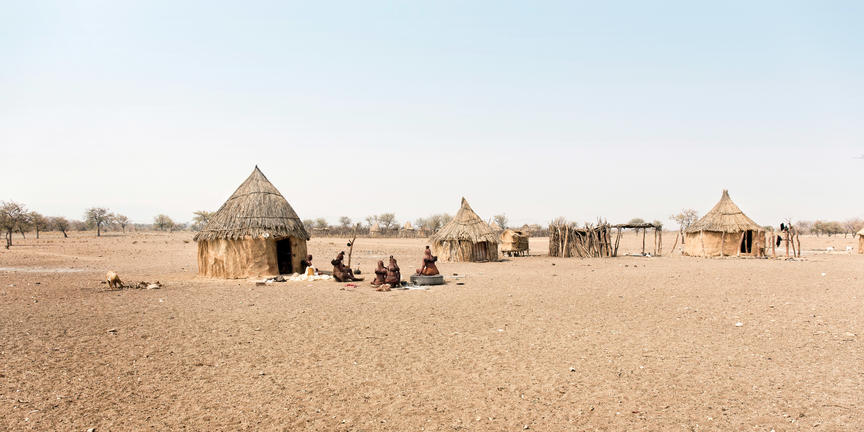Rugged trails take you through impossible terrain that test the engineering of your vehicle and the skills of your driver. Wading through flash floods or bumping over rocks is all in a day's work.
The Kunene is a perennial river that rises in the highlands of Angola and carves its way along the Namibian border through wild and arid mountains before reaching the Atlantic. The rivercourse is an astonishing contrast of sub-tropical growth amid the rocky outcrops and treeless plains of Kaokoland.
The Himba people - traditional pastoralists who rely on their hardy cattle and goats for survival - have fascinating traditional garb that, until recently involved a daily coating of goat fat and red mud ostensibly as protection from the fierce heat of the sun. Their cultures, lifestyle and dress have been well documented and they live side by side with the wildlife in the region much like the proud Maasai people of Masai Mara in Kenya.
The Kunene is a crocodile-infested river with a profusion of makalani palms, sycamore figs, leadwoods and jackalberry trees. Two of southern Africa's rarist birds are found along its banks: the Cinderella waxbill and the rufous-tailed palm thrush. Adventure-seekers can shoot the rapids in inflatable rafts on guided expeditions.
Epupa Falls, remote and wonderfully difficult to reach, is one of only a few waterfalls in Namibia. Water cascades into a spectacular chute and there are several natural rock pools where you can take a refreshing - and much needed - dip.
Ruacana Falls, about 120km east along one of the most rugged tracks in the country, is another excellent birding site although the falls have been reduced to a series of sluices from the hydro-electric dam upstream.
Hartmann's Valley and Marienfluss are two vast wilderness areas in the west of Kaokoland. This is off-roading territory and the valleys support a fragile arid ecosystem. Marienfluss is the more accessible of the two and, being more easterly, it has more vegetation, birds and animals than the desolate Hartmann's.
